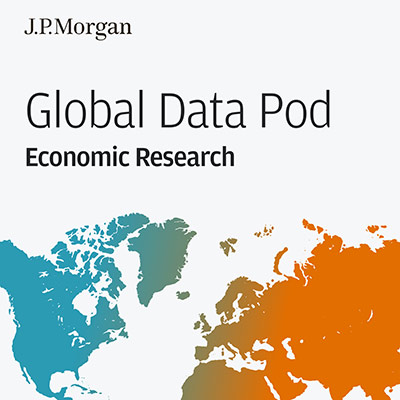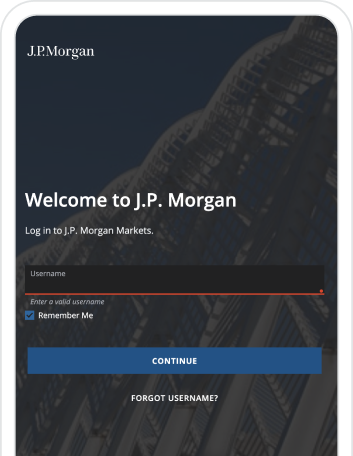Hide
Hide
Global
Research
Employing big data analysis, machine learning and other techniques combined with their macro, asset class, sector and company expertise, our award-winning analysts set the industry standard for delivering the most comprehensive and impactful research to clients.
Latest research
Video insights
Key opportunity spaces for the pharmaceuticals sector in 2024
Chris: Heading into 2024, we're seeing a really exciting opportunity to revisit the pharmaceutical sector given some of the underperformance we saw in 2023. We've got investors sentiments actually pretty bearish for the group right now. And we think that's going to be a really nice opportunity for investors to look at a fairly well positioned group at record low valuations.
Chris: We're really excited about the innovation more broadly across the sector. If you just think about 2023, we had the first disease modifying Alzheimer's drug fully approved by the FDA. If you look at oncology market, we had new technologies, things like CAR-T, bispecific antibodies, ADCs, meaningfully improving standard of care in a number of tumor types. These are huge markets where you haven't seen innovation in the last decade or longer.
Chris: The GLP one category. This year has been really an exciting year. We're estimating that this will be over a hundred billion revenue opportunity for the sector by the time we go out to the early 2030s. And that would make the GLP-1s the largest therapeutic market we've ever seen. We're expecting the capacity for the GLP-1s to double in 2024, increase another 50% in 2025, and that should really alleviate the bottlenecks we have from the capacity standpoint.
Chris: As we think about M&A, the themes really remain growth and innovation and that should lead to further consolidation of the small and mid-cap biotech sector, particularly the higher quality names. What we're seeing is a pivot away from larger, more complex transactions that we saw in the past. And instead what the industry seems to be doing is looking at these kind of smaller assets that are easier to integrate.
Chris: As I think about healthcare reform, the big focus for us is going to be on drug price negotiations. This is really coming about because of the inflation reduction act, which is allowing the US government for the first time to directly negotiate drug pricing with the pharmaceutical industry. Many of these are going to make drugs more affordable for seniors, which is great. But for the drug industry specifically, we're got to really watch to see how these negotiations go. It's a big overhang for the sector. One we think is manageable, but obviously we've got to watch exactly how these negotiations play out.
Lisa: Things to watch for in 2024 when we think about healthcare services specific to managed care and facilities, one, utilization trends. If you think about 2023, we saw an uptick in Medicare advantage utilization trends, we anticipate that those trends will carry forward into the first half of 2024. Second, GLP-1, the impact on both sides. How will this impact the commercial market? How will it impact PBMs? Third, the presidential election.
Lisa: GLP-1 were a big area of topic in 2023. They are currently not covered by Medicare or Medicaid. However, as we move into 2024, We'll need a legislative change for them to be covered.
We recently conducted a survey of 50 of the top 500 companies in the country, a large percentage of them are saying they're not going to cover it for weight loss, so we'll have to wait and see what happens.
Lisa: As we think about the medical costs and pharmacy costs in 24, we're getting back to normalization. Post covid, we had two years where people did not go to the doctor. They did not have surgical procedures done.
We had anticipated coming into 23 that we would see a higher acuity level. what we saw this year is that both cardiac procedures as well as orthopedic procedures, were higher than expected.
As we go into 2024, we expect that trend to continue within Medicare Advantage. On the commercial side, we have generally seen in line, utilization trends across the commercial population.
Lisa: As we think about potential legislative changes for the PBM, pharmacy benefit management business. One of the areas that they're trying to drive is more transparency in the business model. We believe any of the legislation is pretty benign to the current industry as we see it and therefore remain positive on the industry.
Environmental Social Governance is growing in every
geography around the globe. It’s in the headlines, high up on the agendas of
corporations, and at the forefront of investor interest.
Even though it started to take shape in the 1960s, ESG has
gained significant momentum in recent years, with 2020 standing out as a
milestone year in this space. Adoption across the global asset management
industry more than doubled, with total ESG funds growing more than 100 percent.
And companies are now rally more ambitious ESG goals.
What’s driving the move from momentum to mainstream?
This is ESG Investing, Unpacked.
ESG Investing looks at an asset, like equities or bonds,
through an Environmental, Social and Governance lens.
The goal is to determine whether the asset makes a positive
impact. For example, fighting climate change or supporting safe working
conditions. Governance is all about how a company balances stakeholder
interests: How are decisions made? What processes are in place? Who benefits?
Here’s another way to think about it: The “E” and “S” are
the end results. The “G” determines how these results are achieved.
This data helps investors make better-informed decisions.
The rise of ESG investing is based on a few points in
history. Among them are the social movements against the Vietnam war and
apartheid in South Africa, when companies faced divestments in opposition.
In 1981, the first major U.S. organization that advances
responsible investing was founded: The U.S. Sustainable Investment Forum. And
key events created global awareness of environmental issues.
In 2008, the Financial Crisis called into question the
industry’s social license to operate: How can the financial system works for
everyone and not just shareholders? In 2015, 196 countries signed the Paris
Agreement to reduce carbon emissions.
Most recently, the COVID-19 pandemic demonstrated the
connectivity between crises: Public health, climate change and social
inequality. In response, companies prioritized even more ambitious goals around
ESG.
Three main ESG Investing strategies are growing quickly.
Negative Screening typically excludes investments related to weapons, tobacco
and fossil fuels. While exclusions were historically based on moral or
religious preferences, now it’s about the financial risk associated with the
negative impact of industries, such as human health for tobacco and climate
change for fossil fuels.
ESG Integration has become the leading strategy. It focuses
on how companies incorporate ESG criteria into their daily activities to
achieve long-term financial performance. Then, ESG considerations and timelines
are factored into risk analysis and investment decisions moving forward.
Impact Investing is the newest strategy. It intentionally
aims to create positive social and environmental impact that is actively
measured, as well as financial return. Like investing in the private debt of a
company with a business model aimed at providing access to high-quality
education for students from low-income backgrounds. Impact Investing is
becoming increasingly common because more people want their money to contribute
to the United Nation’s Sustainable Development Goals.
The ESG lens can be applied to any asset class. While equity
is the most common, representing half of total ESG assets under management,
green bonds are on the rise. Typically purchased by institutional investors,
they help finance a company’s specific project climate-related or environmental
project.
Sustainability-linked bonds are also gaining traction. These
are performance-based and tied to whether the issuer achieves pre-defined ESG
objectives within a set timeline.
Many investors are now looking beyond ESG targets and are
increasingly focused on measurable results with clear plans. This trend, along
with wanting more of a say in a company’s ESG practices, is expected to
continue for the next several years.
Heightened regulation including environmental, employment,
and civil protections, is another factor driving ESG market growth. Around 90
percent of oversight was implemented in the last 20 years and 50 percent
arrived after 2010.
Europe leads this effort, where public companies are
required to report implemented policies and where regulations are constantly
evolving to reflect broader sustainability goals. Take the EU Green Deal, a set
of policies to help the EU reduce emissions 55 percent by 2030 and reach net
zero by 2050.
But sustainability challenges are global and require
mobilized capital to solve them, all countries are working on ESG. Asia is
beginning to implement its own regulations, and the U.S. administration is
currently working on its own standards as well.
For the next several years, innovation will continue to shape the ESG landscape. From advancements in clean energy, like the growing hydrogen market, to how companies will deliver on advancing racial equality, and the upcoming public investments on clean infrastructures, all eyes are on ESG.
How healthy is the US economy? Could a recession be coming? How do investors feel about the current economic situation?
While none of us can see into the future, yield curves can help us map what lies ahead, answering these questions and many more with surprisingly-high levels of accuracy. So what exactly is a yield curve and how can one little line tell us so much? "
This is "Yield Curves: Unpacked.
In a nutshell, a yield curve is found on a graph that compares bond yields to maturity dates. Once plotted, the points are joined together with a line, forming the familiar yield curve. Here are four terms you'll need to understand to wrap your head around yield curves.
Bonds are debt securities issued by governments and corporations to raise money. In other words, bonds are a loan from an investor to an issuer. If an investor buys a Treasury bond, for example, they're essentially lending money to the U.S. government. Coupons are fixed interest payments, which investors receive periodically. This is the same as the interest paid on any loan, such as a mortgage or personal loan.
Maturity is when a bond's term comes to an end. This can be from 1 year to more than 10 years. At this point, the investor will get back the money they paid for the bond.
Yields are the returns made on a bond. The simplest version of yield is calculated by dividing the interest rate by the bond's current market price. Longer-term bonds will have higher yields-- in a stable economic environment, anyway. This is because they're considered riskier investments, as there's more time for market conditions and bond prices to change.
While a price change doesn't affect the fixed coupon payment, it does affect the yield. When prices go up, yields go down, making the bond less appealing. When long-term bonds have higher yields than short-term bonds, this forms the typical upward slope of a yield curve from left to right. A steeper slope can signal better economic conditions ahead, with higher growth and inflation, meaning better returns on long-term bonds.
Yield curves can also invert and slope in the opposite direction. This happens when short-term bonds have higher yields than long-term bonds. It's rare, but it can signal that an economic slowdown or even a recession is coming. This is particularly true of the U.S. Treasury yield curve, which tracks yields on short- and long-term treasuries. If you hear someone talking about the yield curve, they're likely referring to this one. And it's predicted past recessions with a great degree of accuracy.
How is this possible? First, the Treasury yield curve is a good reflection of investor sentiment. If investors expect interest rates to fall in the future, they might buy longer-term bonds to lock in the current rate, pushing up the price and lowering the yield. This is one way a yield curve can invert.
Low interest rates are usually associated with a weak economic environment, which is why this pattern can spell bad news for the economy-- if investors are correct, of course. Another reason is simply that the Treasury yield curve is so widely watched. Potential signs of a flattening curve may be enough to put markets in a spin.
There can be many reasons behind the pattern seen on a yield curve. And it's hard to account for all the forces at play within the bond market. But whatever the reasons might be, the Treasury yield curve will remain a strong signal of economic activity.
Watch our Research Insights to learn about the key trends impacting the global economy.
Research podcasts

Research Recap
Views from our award-winning Research analysts, who discuss sector trends, the state of the global economy and more. Research Recap is part of Making Sense, J.P. Morgan’s podcast from the Commercial & Investment Bank.

At Any Rate
Analysts from J.P. Morgan Global Research take a closer look at the stories behind some of the biggest trends, themes and developments in markets today.

Global Data Pod
Economists from J.P. Morgan Global Research offer their analysis on the economic data, macro trends and monetary and fiscal policy impacting the world today.
Our platforms
Research
in numbers
Research
in numbers
Research coverage
~870+
analysts located in 25 countries
~75
countries covered
5,200+
companies covered
Best-in-class thought leadership
~100k
pieces of research
Global recognition
Through breadth of our coverage, the depth of our expertise and our commitment to client service, we have become the trusted advisor for clients across the globe. Our top rankings across industry surveys reflect the deep trust and important relationships we have developed with our clients.

Global
Top Global Research Firm (2023)
Institutional Investor
Top Global Fixed Income Research Firm (2023)
Institutional Investor
#2 Global Equity Research Firm (2023)
Institutional Investor
AMERICAS
Top US Fixed Income Research Firm (2023)
Institutional Investor
Top Latin America Fixed Income Research Firm (2023)
Institutional Investor
#2 All-America Equity Research Firm (2023)
Institutional Investor
#3 Latin America Equity Research Firm (2023)
Institutional Investor
Europe
Top Developed Europe Fixed Income Research Firm (2023)
Institutional Investor
Top Emerging EMEA Fixed Income Research Firm (2023)
Institutional Investor
#3 Developed Europe Equity Research Firm (2023)
Institutional Investor
Top Emerging EMEA Equity Research Firm (2023)
Institutional Investor
Asia
#2 Asia (ex-Japan) Fixed Income Research Firm (2023)
Institutional Investor
Top Japan Fixed Income Research Firm (2023)
Institutional Investor
#3 Asia (ex-Japan) Equity Research Firm (2023)
Institutional Investor
Top International Equity Research Firm in Japan (2024)
Institutional Investor






